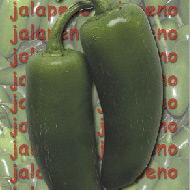
|
home FREE CANNING
RECIPES **Recipes from Fresh Preserving.com **Recipes from the National Center for Food Preservation Recipes from Pick Your Own.org Recipes from Survivalkitchen Blogspot -check the archives Canning2
YahooGroups OK -not canning- but you've got to see this recipe site with tons of pictures! I'm
on Twitter:
|
Canning
Information Links & Recipes
|
|
|
More & more people are starting to grow their own vegetables. With the interest in gardening, naturally to me, the next step is canning. Besides preserving your own, homegrown veggies, people are also getting into canning their own food. Buying things in bulk at a lessor cost, and preserving. Canning supplies have been flying off of the shelf in some stores. It's great that people are starting to get back to basics, but there are steps you need to take to make your preserved foods safe. The Ball Blue Book of Preserving, is the best place to start. You can buy it just about anywhere (ACE, True-Value, Meijers, etc). Check out the link at the bottom of the page The temptation to change a recipe is great (and I should talk, I'm guilty of changing recipes), but you should stick with an approved recipe, so as you don't change the consistancy and possible acidity of your canned goods. The first two recipe sites** listed on the left are approved. There is a specific time of heating for each approved recipe, that's been tested to help kill bad organisms. Botulism is the big baddie in canning. Canning is a wonderful way of preserving your home grown produce. It's a very satisfying hobby for many. But be safe, follow the rules! Click on the link for an interesting PDF about major canning sins, by the Utah State University Extension. There is a site online that has just about everything you need to know about preserving safely. It's from the University of Georgia, which does all the testing, and produces courses for other universities in food preservation safety. They even have a free online self-study course! The course is offered in the University of Georgia WebCT system. UGA requires registration for you to receive a login. I sat down for a couple of hours early on a Saturday morning and completed the course. Even though I have been canning for years, I still learned a lot! Follow the link below. National
Center for Home Food Preservation
How
do you can? |
||
